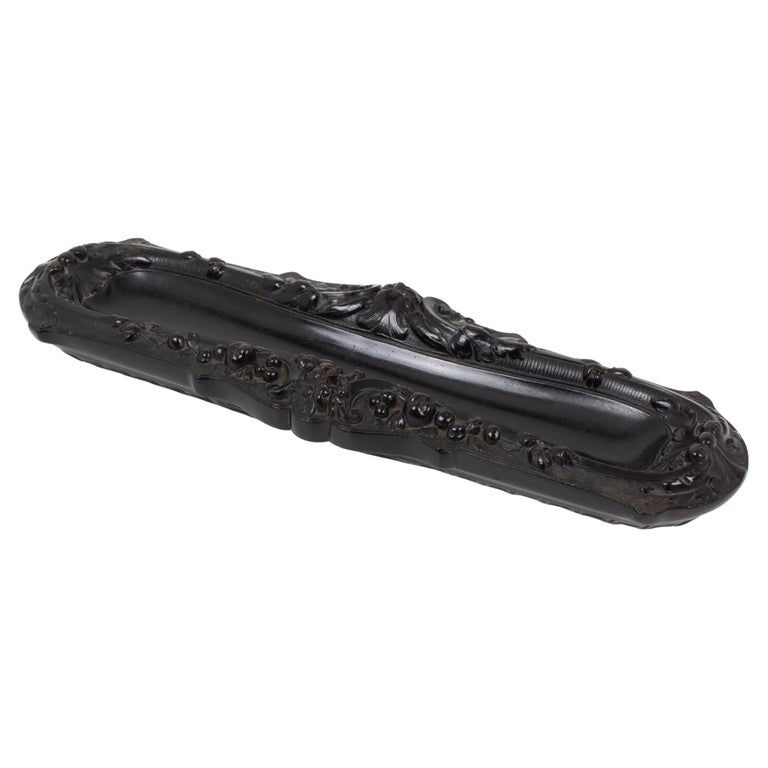This superb Napoleon III Gutta Percha pen holder was handcrafted in France in the 1880s. The antique desk accessory is exquisitely crafted with different molded designs on each side and delicate ornamentation throughout. There is no known maker.
Note: Gutta-percha is a tree of the genus Palaquium in the family Sapotaceae. The name also refers to the rigid, naturally biologically inert, resilient, electrically nonconductive, thermoplastic latex derived from the tree. It is a polymer of isoprene that forms a rubber-like elastomer.
The word "gutta-percha" comes from the plant's name in Malay: "Getah" translates as "latex." Percha or Perca is an older name for Sumatra.
Long before Gutta-percha was introduced into the Western world, it was used in a less processed form by the natives of the Malaysian archipelago for making knife handles, walking sticks, and other purposes.
William Montgomerie, a Scottish medical officer in imperial service, introduced gutta-percha into practical use in the West. He was the first to appreciate the potential of this material in medicine, and he was awarded the gold medal by the Royal Society of Arts, London, in 1843.
This material was scientifically classified in 1843 and was recognized as a valuable natural thermoplastic.
During the second half of the 19th century, gutta-percha was used for many domestic and industrial purposes. Gutta-percha was particularly important for the manufacture of underwater telegraph cables. Indeed, it made them possible. It does not degrade in seawater and is an excellent electrical insulator. These properties, moldability, and flexibility made it ideal for the telegraph industry. There was no other material to match it in the 19th century.
In the mid-19th century, gutta-percha was used to make furniture, notably by the British Gutta Percha Company, established in 1847. These ornate, revival-style pieces were shown at the 1851 Great Exhibition in Hyde Park, London. The company also made a range of utensils.
Gutta-percha was used to make "mourning" jewelry because it has a natural dark color and could be easily molded into beads or other shapes.
It fell into disuse when synthetic plastics such as Bakelite became available.
(credit: Wikipedia)
Napoleon III Gutta Percha Pen Holder, France circa 1880
circa 1880

